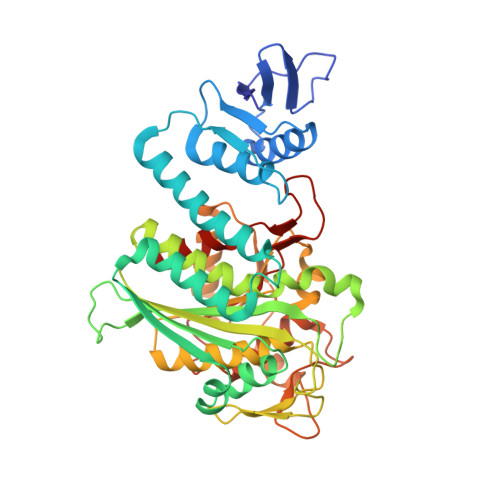Comparison of metal-bound and unbound structures of aminopeptidase B proteins from Escherichia coli and Yersinia pestis.
Minasov, G., Lam, M.R., Rosas-Lemus, M., Slawek, J., Woinska, M., Shabalin, I.G., Shuvalova, L., Palsson, B.O., Godzik, A., Minor, W., Satchell, K.J.F.(2020) Protein Sci 29: 1618-1628
- PubMed: 32306515
- DOI: https://doi.org/10.1002/pro.3876
- Primary Citation of Related Structures:
6OAD, 6OV8 - PubMed Abstract:
Protein degradation by aminopeptidases is involved in bacterial responses to stress. Escherichia coli produces two metal-dependent M17 family leucine aminopeptidases (LAPs), aminopeptidase A (PepA) and aminopeptidase B (PepB). Several structures have been solved for PepA as well as other bacterial M17 peptidases. Herein, we report the first structures of a PepB M17 peptidase. The E. coli PepB protein structure was determined at a resolution of 2.05 and 2.6 Å. One structure has both Zn 2+ and Mn 2+ , while the second structure has two Zn 2+ ions bound to the active site. A 2.75 Å apo structure is also reported for PepB from Yersinia pestis. Both proteins form homohexamers, similar to the overall arrangement of PepA and other M17 peptidases. However, the divergent N-terminal domain in PepB is much larger resulting in a tertiary structure that is more expanded. Modeling of a dipeptide substrate into the C-terminal LAP domain reveals contacts that account for PepB to uniquely cleave after aspartate.
Organizational Affiliation:
Department of Microbiology-Immunology, Feinberg School of Medicine, Northwestern University, Chicago, Illinois, USA.




















